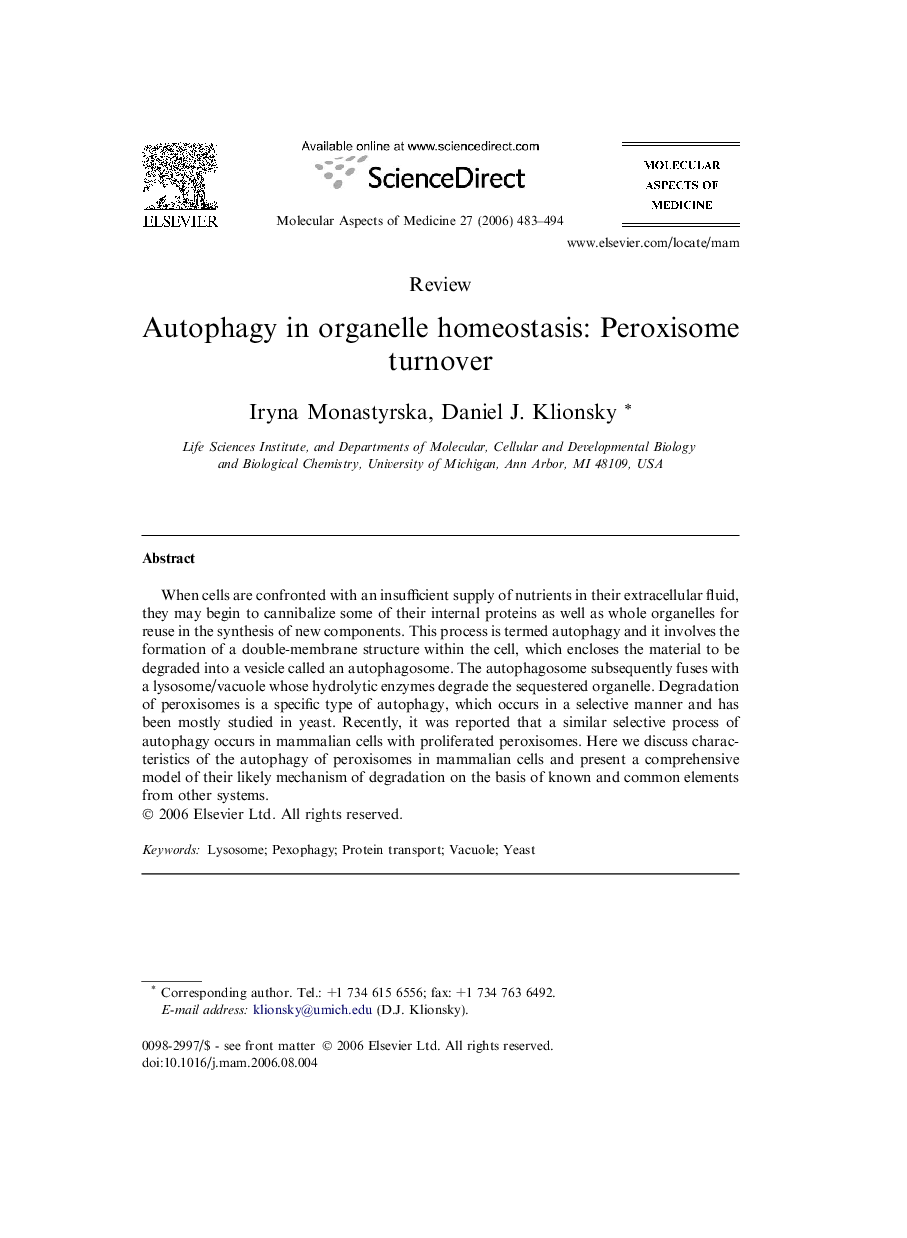| Article ID | Journal | Published Year | Pages | File Type |
|---|---|---|---|---|
| 1995853 | Molecular Aspects of Medicine | 2006 | 12 Pages |
When cells are confronted with an insufficient supply of nutrients in their extracellular fluid, they may begin to cannibalize some of their internal proteins as well as whole organelles for reuse in the synthesis of new components. This process is termed autophagy and it involves the formation of a double-membrane structure within the cell, which encloses the material to be degraded into a vesicle called an autophagosome. The autophagosome subsequently fuses with a lysosome/vacuole whose hydrolytic enzymes degrade the sequestered organelle. Degradation of peroxisomes is a specific type of autophagy, which occurs in a selective manner and has been mostly studied in yeast. Recently, it was reported that a similar selective process of autophagy occurs in mammalian cells with proliferated peroxisomes. Here we discuss characteristics of the autophagy of peroxisomes in mammalian cells and present a comprehensive model of their likely mechanism of degradation on the basis of known and common elements from other systems.
